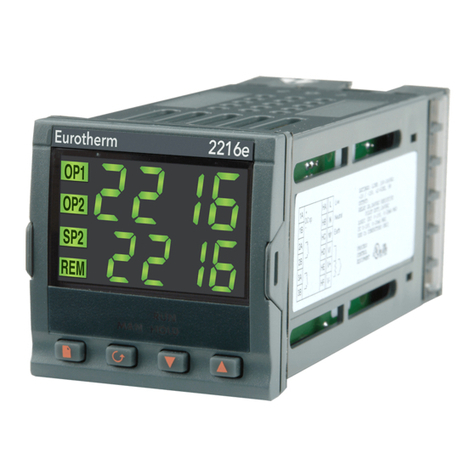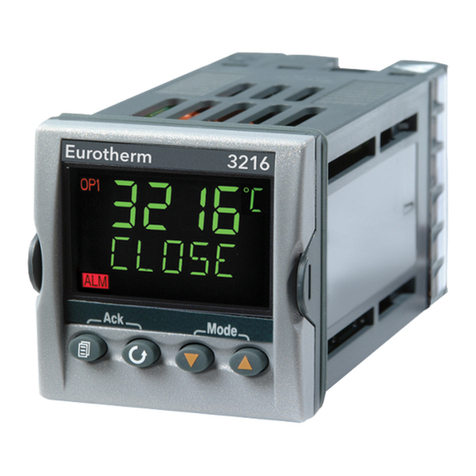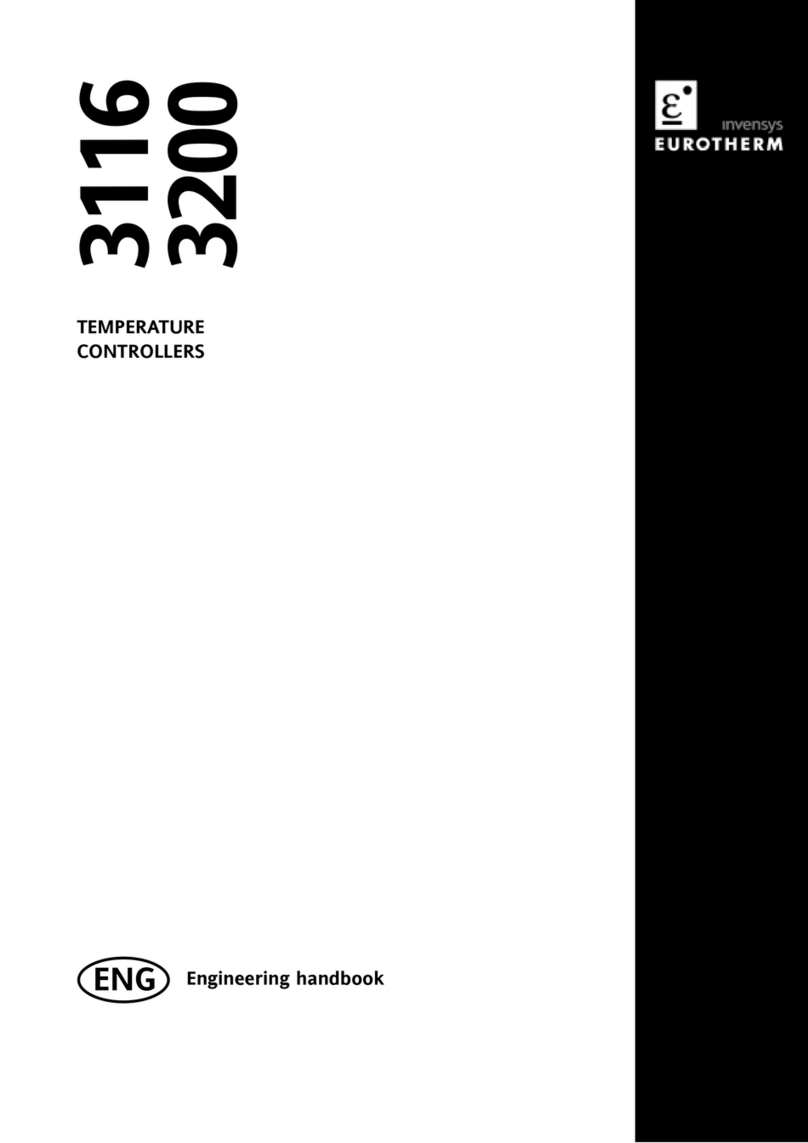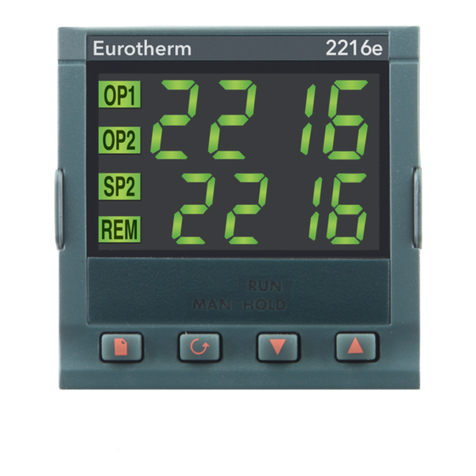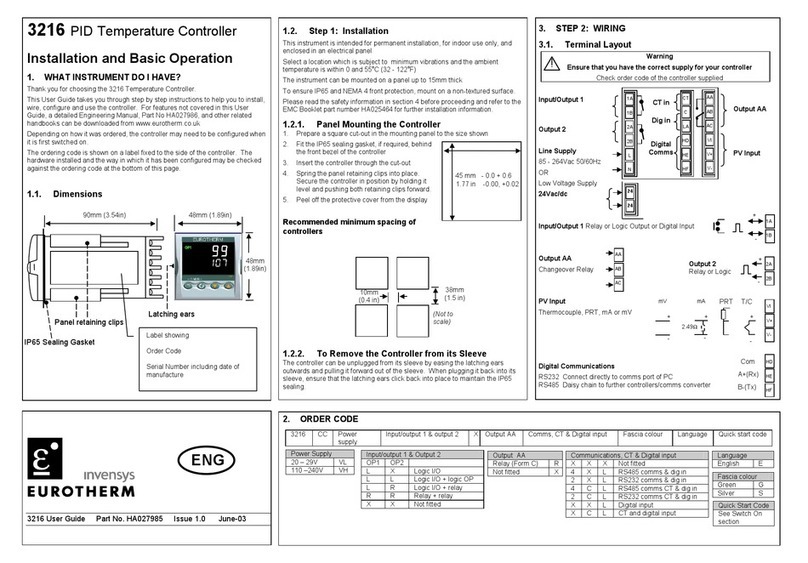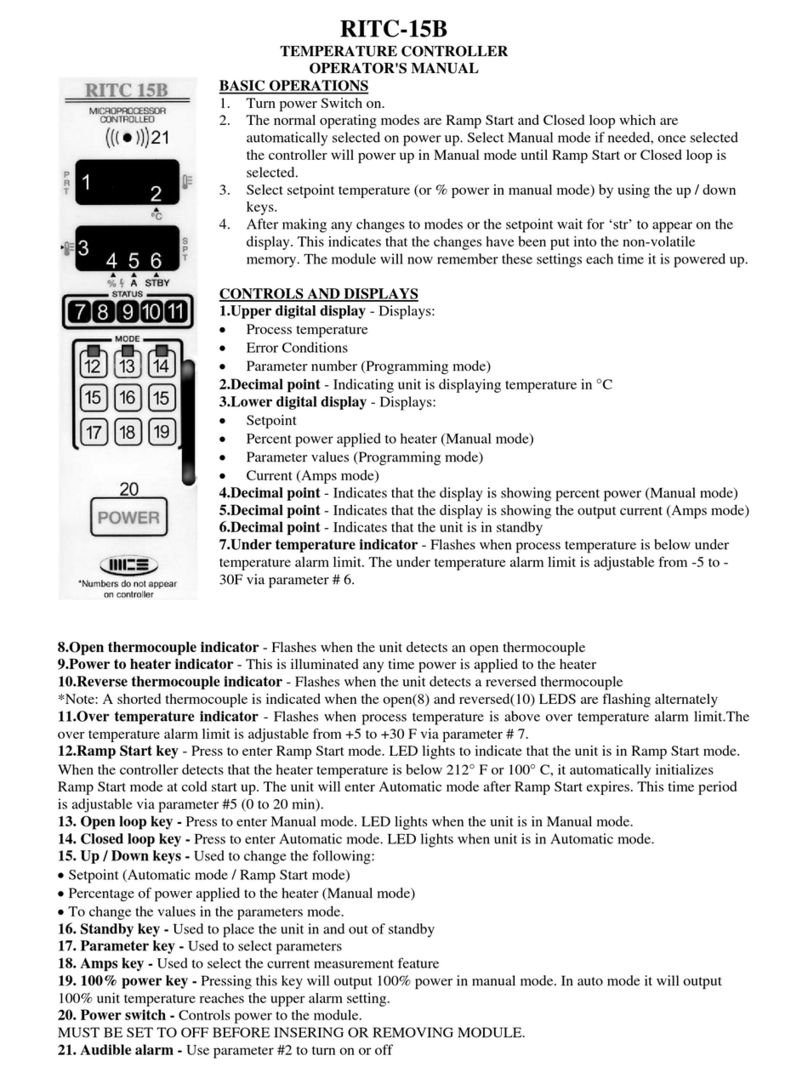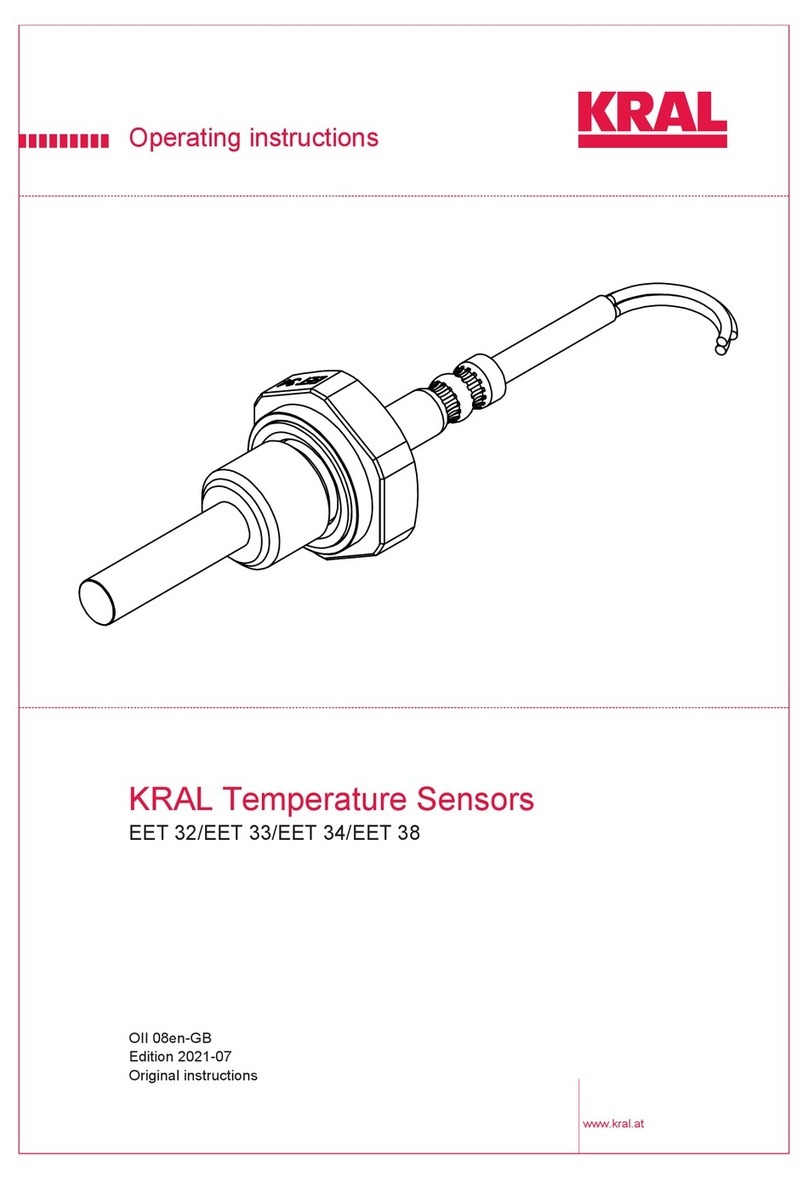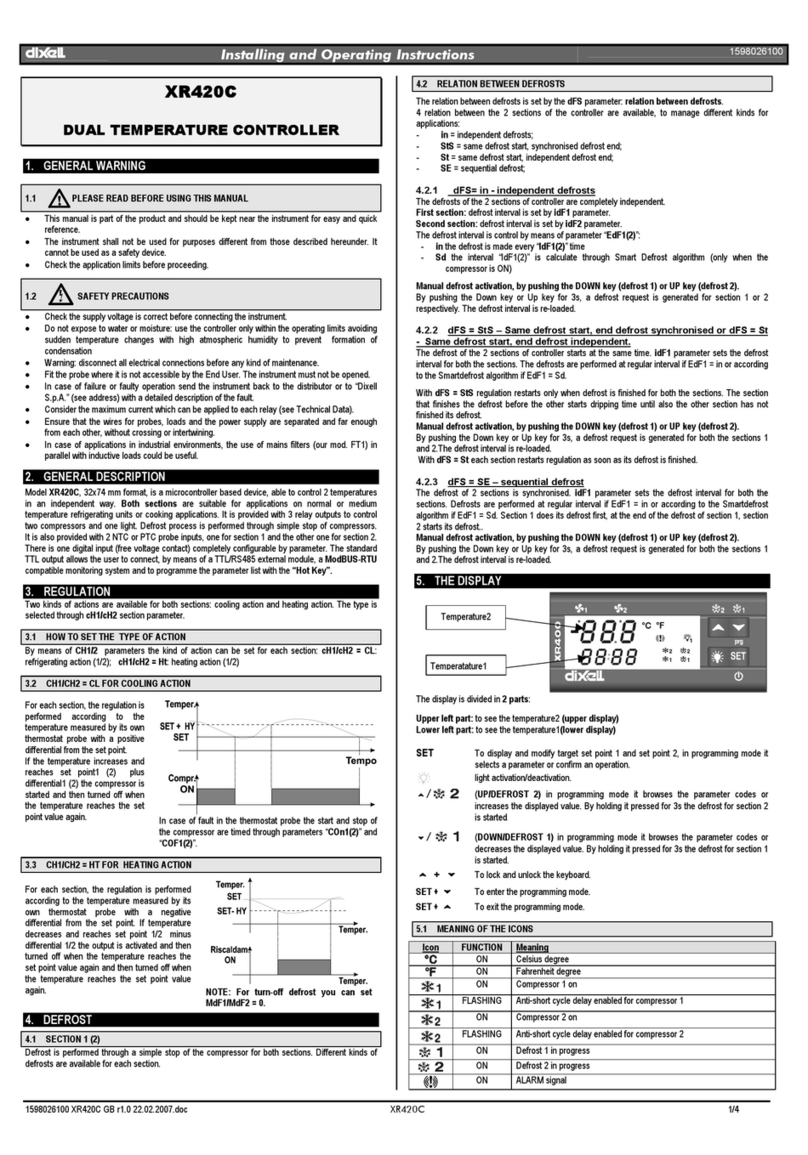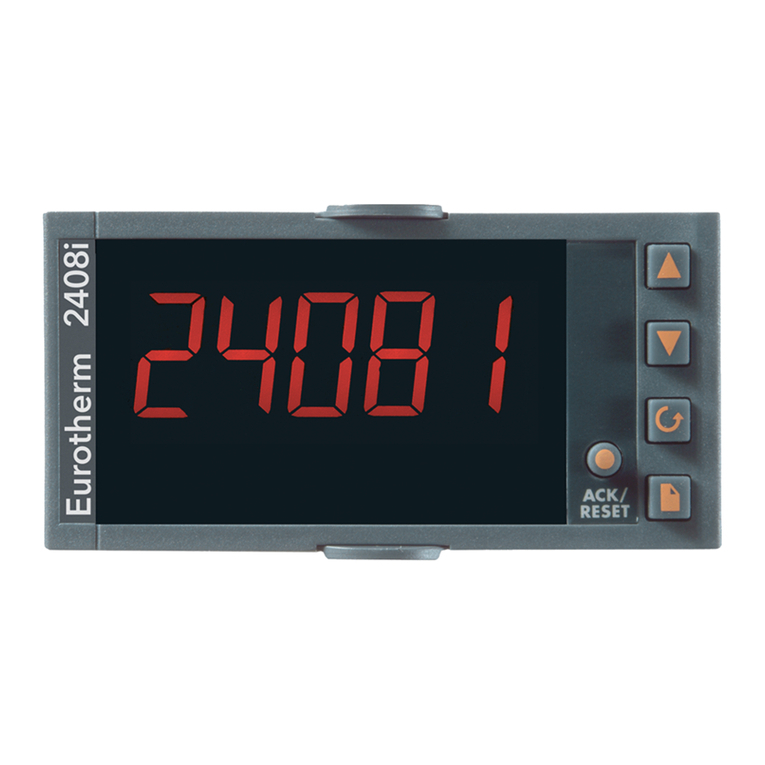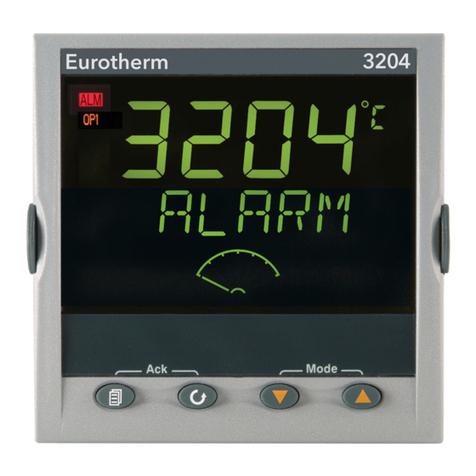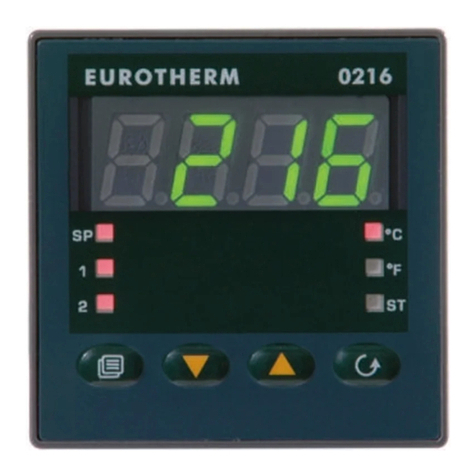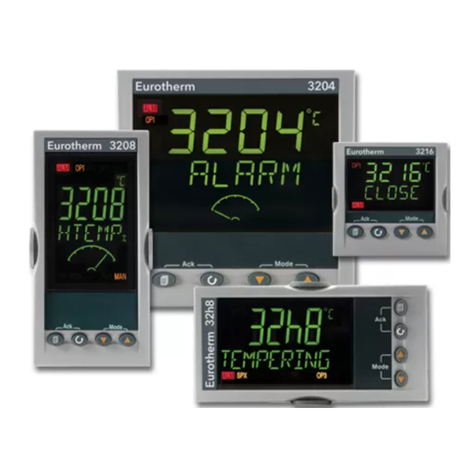-4- HA026202 Issue 2 15/07/99
AUTOMATIC TUNING
In PID control, the output from the controller is the sum of three
terms: Proportional, Integral and Derivative. These three terms
deliver just the right amount of power to hold the temperature at
setpoint without oscillation. For stable control, the PID values
must be ‘tuned’ to the characteristics of the process being
controlled. In the 2216L and 2208L this is done automatically
using advanced tuning techniques.
Automatic tuning is performed by switching the output of the
controller On and Off to induce an oscillation in the measured
temperature. From the amplitude and period of the oscillation,
the PID values, shown in the table below, are calculated.
Parameter Display Meaning or Function
Proportional
band
0
The bandwidth in °
or °
over which the output
power is proportioned between minimum and
maximum.
Integral time
6O
Determines the time taken by the controller to
remove steady-state error signals.
Derivative
time
6
Determines how strongly the controller will react
to the rate-of-change of temperature.
Low cutback
)
The number of °
or °
below setpoint at which
the controller will cutback the output power to
prevent overshoot on heat up.
High
Cutback
#
The number of °
or °
above setpoint at which
the controller will increase the output power to
prevent undershoot on cool down.
Relative
cool gain
5)D
Only present if cooling has been configured.
Sets the cooling proportional band by dividing the
Pb value by the
5)D
value.
If the process cannot tolerate 100% heating or cooling during
tuning, the power can be restricted by the heating and cooling
limits in the Output list. However, the measured value must
oscillate to some degree for the tuner to determine values.
Tuning is normally performed only once during the initial
commissioning of the process. However, if the process under
control subsequently becomes unstable (because its
characteristics have changed), you can re-tune again at any time.
It is best to start tuning the process from ambient temperature, to
allow the tuner to calculate more accurately the cutback settings.
Heating and Cooling Output Cycle Times
Before commencing a tuning cycle, set the values of
@D#
(heating output cycle time) and
@D
(cooling output cycle
time) in the
/0
(output) list.
For a logic heating output (switching a solid state relay), set
@D#
to
D
sec.
For a relay output, set
@D#
to
D
sec.
For a logic cooling output used to control a solenoid valve, set
@D
to
D
sec.
Tuning procedure
1. Set the setpoint to the value at which you will normally
operate the process.
2. In the ‘
69.
’ list, select ‘
69.
’ and set it to ‘
/.
’
3. Press the Page and Scroll buttons together to return to the
HOME display. The display will flash ‘
69.
’ to indicate
that tuning is in progress.
4. The controller will induce an oscillation in the temperature by
turning the heating on and then off.
5. After two cycles of oscillation the tuning will be completed
and the tuner will switch itself off.
6. The controller will then calculate the tuning parameters and
resume normal control action.
If you want ‘Proportional only’ or ‘P+D’ or ‘P+I’ control, you
should set the ‘
6O
’ or ‘
6
’ parameters to
before
commencing the tuning cycle. The tuner will leave them off and
will not calculate a value for them.
Typical automatic tuning cycle
Calculation of the cutback values
When low cutback or high cutback is set to ‘
97/
’ their values
will be fixed at three times the proportional band, and will not be
altered during automatic tuning. If set to any other value, they
will be calculated as part of the tuning process.
MANUAL TUNING
If for any reason automatic tuning gives unsatisfactory results,
you can manually tune the controller, as follows:
With the process at its normal running temperature:
1. Set Integral Time ‘
6O
’and Derivative Time ‘
6
’ to
.
2. Set High Cutback and Low Cutback, ‘
#
’ and ‘
)
’, to
‘
96/
’
3. Ignore the fact that the temperature may not settle precisely at
the setpoint
4. Reduce the proportional band ‘
0
’ until the temperature just
starts to oscillate. If the temperature is already oscillating,
increase the proportional band until it just stops oscillating.
Allow enough time between each adjustment for the
temperature to stabilise. Make a note of the proportional band
value ‘B’ and the period of oscillation ‘T’.
5. Set the PID parameter values according to the formula below:
Type of control Proportional
band ‘
0
0
’Integral time
‘
6O
6O
’Derivative time
‘
6
6
’
Proportional only 2xB OFF OFF
P + I 2.2xB 0.8xT OFF
P + I + D 1.7xB 0.5xT 0.12xT
Setting the cutback values
The above procedure sets up the parameters for optimum steady
state control. If unacceptable levels of overshoot or undershoot
occur during start-up or for large step changes in temperature,
then manually set the cutback parameters
)
and
#
.
Proceed as follows:
1. Set the low and high cutback settings to 3 x the proportional
band (that is to say,
)
=
#
= 3 x
0
).
2. Note the level of overshoot or undershoot that occurs for
large temperature changes (see the diagrams below).
In example (a) increase
)
by the overshoot value. In example
(b) reduce
)
by the undershoot value.
Example (a) Example (b)
When the temperature approaches the setpoint from above, you
can set
#
in a similar manner.
Manual reset
When the integral term is set to
the parameter manual reset
(
5
) appears in the
0O )O6D
This parameter sets the
output power when the error signal is zero. This value can be
manually adjusted to remove the steady state error - the function
normally performed by the Integral term.
Time
Temperature
Temperature
Time
Undershoot
Overshoot
Time
Temperature
